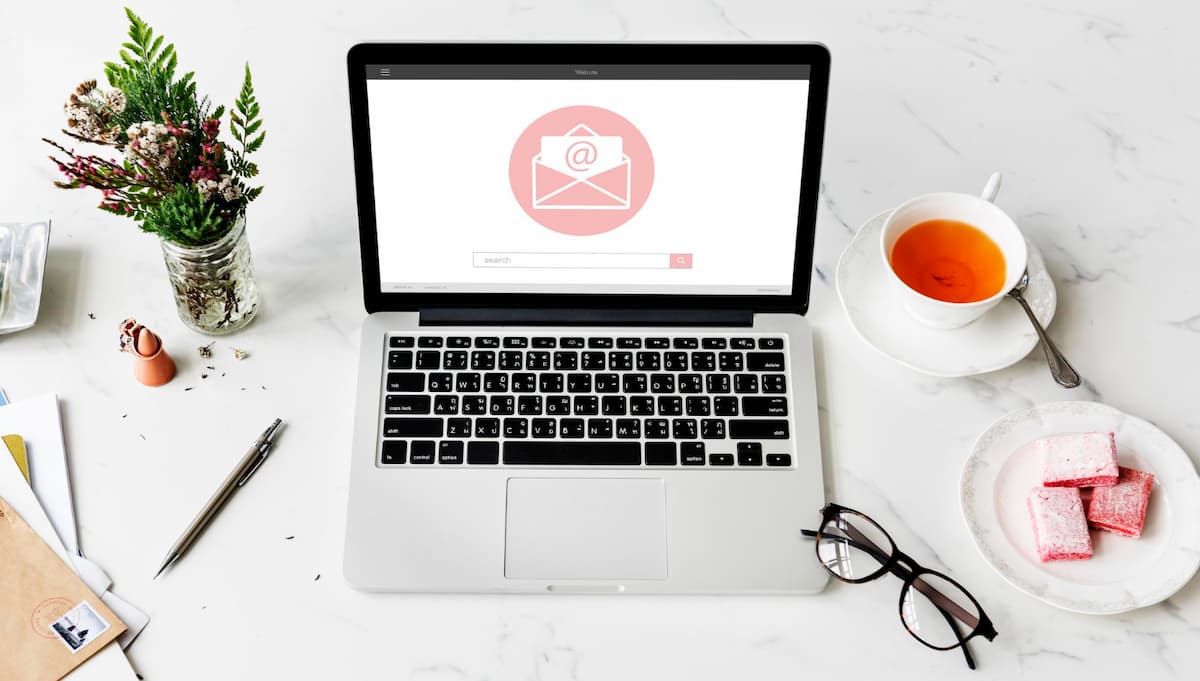Are you looking for the best way to increase your email marketing success? Would you like to develop unique email marketing strategies that highlight these efforts? Then you’ve landed on the right page.
In this article, we’ll go over the essential aspects of an effective email marketing campaign, trying to give examples and introduce suitable tools. Sounds interesting? Then read on!

What’s Email Marketing?
Email marketing is an advertising channel that uses email to build relationships with new customers. Email marketing can strengthen existing relationships by generating leads and increasing brand awareness. Email marketing allows B2C and B2B companies to share their products and services with customers or other businesses.
Modern email marketing strategies require companies and businesses to focus on customisation, personalisation, and customer satisfaction. New designs must be multi-functional, and email marketers should refrain from sending the same material repeatedly for an extended period – yet automation is a must and should be used wisely.
Significance of Email Marketing
Whether you’re creating your first campaign or working on a big project, there are many reasons why your business needs an effective email marketing strategy, including:
- Engage with your target audience: For example, if you want to inform your customers about a new product or service, you can send emails to the people who need that service. This way, you show your target audience that you care about them.
- Personalised and targeted messaging: Marketers should ideally have a personalised value proposition that briefly explains why a subscriber should choose their product/service. You can achieve this personalisation even if you write to thousands of people.
- Direct visitors to your website: When developing an effective email marketing campaign, your subscriber list is crucial. Avoid buying a list to direct visitors to your website. Use the effective methods described in this blog post, supplement them with what you find in our other articles, and develop your own to grow your subscriber list.
- Return on investment (ROI): A 2020 survey of marketers found that every dollar invested in email marketing returned at least $36 worldwide. This parameter was highest for the retail, e-commerce, and consumer goods industries at $45 per dollar.
What Are the Essential Elements of A Marketing Email?
The anatomy of marketing emails plays a critical role in their success. To better interact with your subscribers, make sure your email includes the following:
- An actual email address: There are many reasons to avoid a no-reply email address. The most important is that no-reply emails hinder two-way communication.
- A meaningful subject line: First impressions are always vital. Impress your visitor right from the start by making your subject line stand out. For example, be concise and use open-ended questions to pique the reader’s interest.
- The body should contain reviews, informative posts, or other elements you want to share with your audience. Divide the entire text into structured sections and subsections.
- The call to action (CTA) is perhaps the most crucial component of your marketing email. Pay special attention to its design and placement, as it should be quickly visible.
- Footer and header are also required for some emails.
- Social media contact information and links: Integrating social media into your email marketing campaigns allows you to better engage with your subscribers. For example, you can show appreciation by following someone who has followed you.

5 Steps For Effective Email Marketing
If you’re dipping your toes into email marketing, the number of options you’ll find online is probably pretty intimidating. But don’t worry; here are the key steps that will help you make steady and continuous progress on your email marketing journey.:
STEP 1: Understand Your Audience
To create an effective email marketing campaign, you need to understand why you’re sending these emails. Your objective shouldn’t be sending as many templated emails as possible to everyone. You should define your goal precisely and act accordingly.
STEP2: Develop Effective Email Marketing Segmentation Strategies
Everyone knows that building an email marketing list can be daunting. The biggest question is, “How do I find the most efficient way to segment my email marketing lists?”
Let’s break down two of the best ways to do it.
Demographic Analysis: Demographic data, such as age, gender, and salary, is essential for marketers to predict their customers’ needs and interests. The more information you can gain about a user, the more accurately you can guess their needs – simply because you have more demographic segmentation options.
Email Engagement: Usually, your recipients can be divided into two groups: active and inactive. Inactive are those who, for example, have not opened your emails for a long time. You can use open and click-through rates as metrics to make a more effective email marketing campaign. If you can distinguish between inactive and active users, you can develop and revise a new specialised or customised campaign.
STEP 3: Test Your Emails & Evaluate Quantitatively
Email testing is essential to any effective email marketing campaign because it allows you to see how your subscribers are responding to your emails. Make sure you thoroughly evaluate your emails before sending them out. Run A/B tests on a range of designs, copy, subject lines, and CTAs.
“Okay, but which elements should I be testing?”
- Subject line: Pay attention to length, subject, and personalization. If possible, include offers.
- Pre-header: In most cases, we can’t tell if a pre-header is necessary or not. If this is the case for you as well, do A/B testing. Also, test two topics in your pre-header to see which one is better.
- Timing: When is the best time or day to send your email? While there’s no universal answer, you can try it out and see what happens. If you send your emails on Thursdays or Fridays, try Saturday. And if you’re an early riser when it comes to email marketing, try late hours – before midnight, for example.
- CTAs: Work on text and colour. Generally, there are two types of CTAs: generic ones like “Read more!” and specific ones like “Learn more about …”. Your CTA should match the rest of your email but also be easily recognisable, such as through contrasting colours.
STEP 4: Automate Your Email Strategy
When it comes to nurturing your leads, regardless of the stage of the sales funnel, email marketing automation is a never-ending solution. Take the time to evaluate how well your email campaign is working. There are many platforms you can use depending on your needs. Here are a few:
- Moosend is software with powerful automation features that helps you improve your email marketing activities. With the drag-and-drop builder, you can send pixel-perfect emails to your audience that are more likely to be opened and clicked on.
- OptinMonster is a WP plugin that automatically collects and segments email addresses. The tool can segment your subscribers based on their activity, geographic location, etc.
- Constant Contact offers user-friendly email marketing services. This AI-powered tool is easy to set up and provides excellent services for event invitations, registrations, and tickets.
STEP 5: Tracking & Analytics
You can track different metrics to see how well your email marketing campaign works. This way, you can find answers to these questions and similar ones; where do you need to improve? How many customers are targeted by your email marketing?
- The open rate represents the number of emails opened relative to the number of emails delivered.
- Click Rate represents the total number of clicks on your emails in relation to the total number of emails delivered.
- Hard bounce rate is another term for the number of emails not delivered due to invalid or non-existent email addresses, divided by the total number of emails sent.

Email Marketing Best Practices
Regardless of your business, there are always non-negotiable best practices for developing a more effective email marketing campaign.
Sending Welcome Emails
Make sure you send welcome emails to those who have signed up and provided their email address. Sometimes it is advisable to include a unique unsubscribe option at the beginning of your welcome email.
Remember that the main goal is to introduce your brand, but you can also consider adding value, next steps or a CTA. To keep subscribers interested, you can also provide special offers or discounts or refer to your best copy on your website.
Don’t Forget About Technology & Tools
These days, you can use numerous tools to strengthen your email marketing campaign, including
- Canva to create compelling images for your emails
- AWeber as an all-in-one email marketing tool to design your emails
- GetResponse for planning every element of your email journey
Be Concise
It’s not advisable to include unnecessary text or parts to make your email visually appealing. Yes, aesthetics are important, but too many visual elements aren’t welcome in an email that should be like a press release.
Remember, you’re not writing an academic treatise; leave your mind blank and build each email uniquely by finding the starting point. Most of your customers read emails on their smartphones or tablets. If you include large blocks of boring text, your visitors won’t scroll down. At best, they’ll spend little more than two minutes with your email.









